How Long Does Sterling Silver Last? Factors That Affect Its Durability

Table of Contents

Key Takeaways
- Sterling silver, made of 92.5% pure silver alloyed mainly with copper, offers a balance of beauty and durability that determines how long will sterling silver last for jewelry use. long-term jewelry use.
- When you practice the right care and cleaning rituals, your sterling silver will last for generations. With consistent cleaning, dry storage, and limiting chemical exposure it will quickly become an everyday family treasure.
- For example, in the United States, environmental conditions such as humidity, air pollutants, and temperature can increase tarnishing. They don’t do irreversible harm to regularly cared-for silver.
- The hallmark on sterling silver, typically stamped as “925,” allows consumers to easily recognize genuine sterling silver. Silver-plated pieces have a much shorter life span and are less repairable.
- Adding quality craftsmanship and a smart design helps increase the lifespan of sterling silver even more. So, it’s very important to purchase only from trusted jewelers.
- Inspect regularly Inspect your sterling silver jewelry regularly for signs of tarnish, scratches, and thinning. Opt for professional cleaning whenever possible to ensure it remains in optimal condition and preserve its integrity.
How long does sterling silver last is a common question for jewelry lovers. With proper care and maintenance, sterling silver can last for generations, becoming treasured family heirlooms that retain both their beauty and value. Sterling silver can last you for many decades or even a lifetime with proper care and maintenance. This piece is made of 92.5% pure silver alloyed with other metals. It holds up well to daily wear and is often used in jewelry, tableware and mementos throughout the U.S.
The truth about sterling silver is that it does tarnish. You can prevent this process from occurring by cleaning your jewelry often and storing it in dry environments. Unlike pure silver, the new metals in sterling silver provide it with additional strength, making it ideal for everyday use.
Almost all families in America have some way of passing down sterling silver through generations, proving how well it can truly last. Here’s the lowdown on ensuring your sterling silver stays fabulous for as long as possible.
What Defines Sterling Silver?
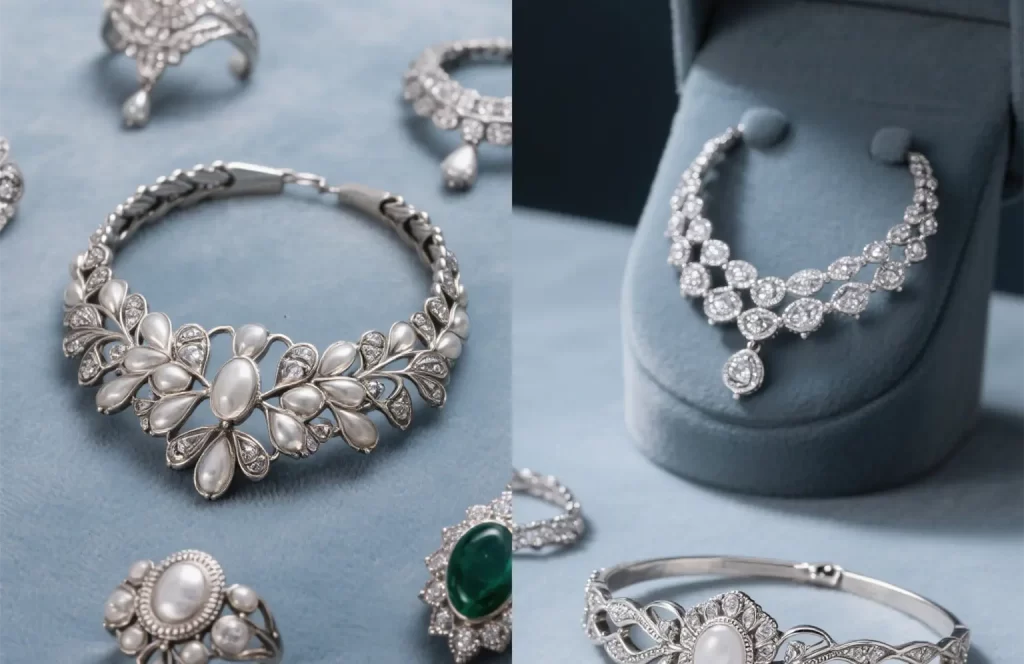
Sterling silver has a long established home in the world of jewelry and art, known not only for its unique appearance but also for its durability. The resulting combination of quality sterling silver with just the right amount of other metals creates a special brilliance that sets it apart from other silver standards, ensuring that sterling silver lasts for many years.
The 92.5% Silver Standard
When something is described as sterling silver, it indicates that the item is 92.5% pure silver. This “925” combination is the perfect balance. Fine silver, which has a purity of 99.9%, is much too soft for jewelry that would be worn every day. Conversely, coin silver, usually 90% silver, is less shiny and more brittle.
The 92.5% silver standard balances luster and durability. This is exactly why people choose sterling silver for everyday jewelry, like rings and bracelets. In the United States, authentic sterling silver must be marked with a “925” stamp. This mark is your best indication that you’re getting the real deal.
Why Other Metals Are Added
Adding copper helps make sterling silver more durable. One significant reason for this is the fact that pure silver bends too easily. Copper allows it to maintain its shape. This combination makes it more conducive to create intricate patterns.
Many jewelers apply a very thin layer of rhodium to protect the silver and prevent it from tarnishing. This layer is prone to wear and tear over time and might require a re-dip. HonHo Jewelry is a jewelry manufacturer located in Yiwu China, specializing in 925 silver custom jewelry. These durable, waterproof, non-tarnish beauties show that with the perfect combination of ingenuity and quality, a little magic happens.
Identifying Genuine Sterling Silver
Check for identifiers such as “925,” “sterling,” or “ster” stamped on your piece. These are the stamps that are federally mandated here in the US. Purchase from reputable retailers to prevent counterfeits.
At home, a clean white cloth should leave a dark stain if you rub genuine sterling silver. If you’re still unsure about your item, a jeweler will be able to test it for you.
How Long Does Sterling Silver Last: A Comprehensive Guide
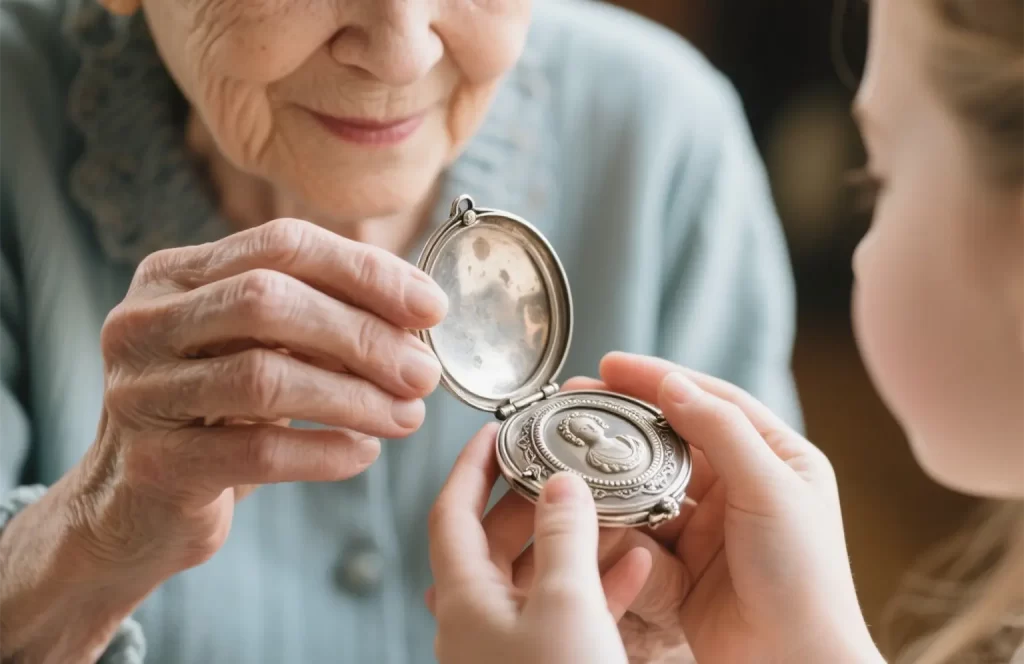
Sterling silver offers an unbeatable blend of style and strength. This attractive combination ensures its steady use in jewelry, tableware, and decorative objects. Its longevity can be extraordinary, with some works lasting far longer than a human lifetime if properly maintained.
This part breaks down what determines how long sterling silver lasts, such as care, climate, wear and tear, and quality of work. Having a better grasp of these intricacies allows consumers to be better prepared and to get the most enjoyment and longevity out of their silver products.
1. How Long Does Sterling Silver Last: Potential Lifespan
Sterling silver jewelry or household items should last a lifetime if you take care of them properly. Most American families have some silverware, a locket, or a sterling silver ring that they have received from grandparents or great grandparents. These great-grandmama keepsakes are full of stories and memories, surviving fashions and decades of changing tastes. Regular cleaning and proper storage are essential for maintaining these precious sterling silver jewellery pieces.
In short, how long a sterling silver piece will last greatly depends on how well the jewelry was constructed to begin with. The quality of the first cast, particularly for quality sterling silver, is very important in determining the longevity of a piece. Further factors of the polish’s precision and alloy type also play a role in both its functionality and aesthetic appeal.
For instance, sterling silver made by well-known designers or by expert hands tends to hold up nicely over the long haul. High quality craftsmanship helps pieces hold up against bending, cracking, and other types of wear. Because of this, they are able to stay in circulation for decades, or sometimes even centuries.
2. Key Factors Determining How Long Sterling Silver Lasts
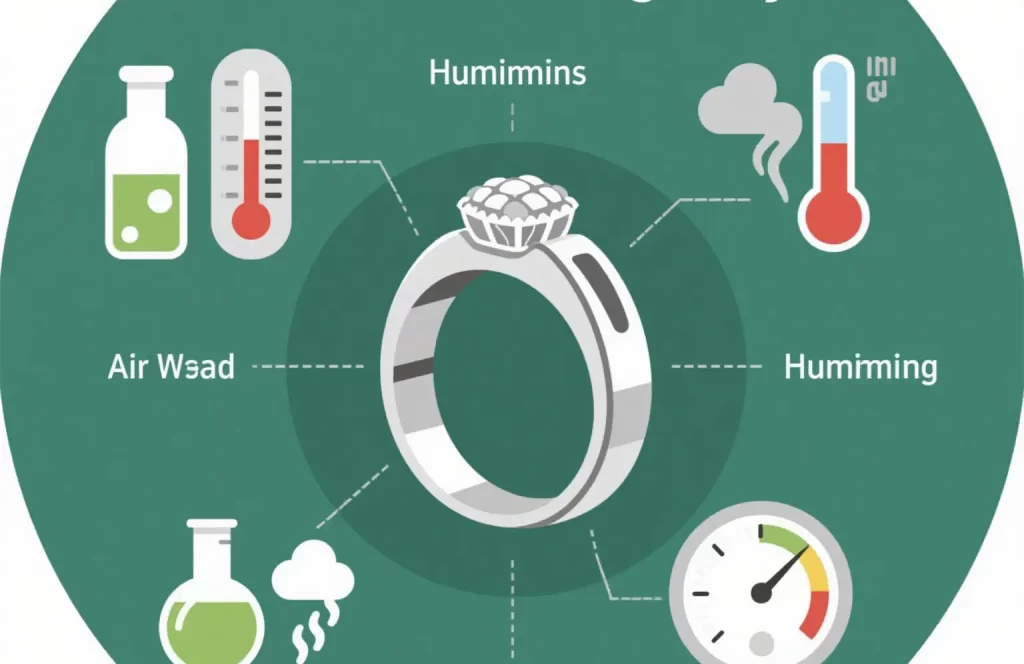
How long sterling silver lasts goes beyond just its makeup. It’s influenced by the environment it exists in. Humidity, air quality, and even the introduction of household chemicals may play a role in how long silver lasts.
Excessive humidity will increase the rate of tarnishing. Air pollutants, primarily sulfur, react with silver and cause it to tarnish. Daily habits make a difference as well. Simply wearing a silver ring when you wash your hands exposes the metal to danger.
Likewise, putting on lotions or perfumes while wearing a necklace can subject it to chemicals that gradually eat away its surface. Storage conditions also play a formative role. Storing silver wrapped in anti-tarnish cloth or in sealed containers can protect it from both the air and moisture.
With just a bit of attention to the way silver is stored, it will greatly extend the life of your silver for years to come.
3. Extend How Long Your Sterling Silver Lasts: Essential Care Tips (US Focus)

Airborne pollutants play a big role in how fast sterling silver will tarnish here in the United States. Sulfur compounds, produced primarily through mining, car exhausts, and industrial sites, greatly contribute to the acidification process.
Even in suburban areas, just a few parts per million of sulfur is enough to trigger the chemical reaction that tarnishes silver. Humidity is the second key factor. In coastal or Southern states, where the air carries more moisture, silver items can tarnish and corrode more quickly.
Temperature changes, a common occurrence in many areas of the US, will make silver expand and contract. With time, this can cause stones in jewelry to loosen or even weaken soldered joints. Even small adjustments to the environment can prove impactful.
Silver that is kept in a dry, consistent environment will stand the test of time far better than items left on a bathroom counter or next to an open window.
4. Impact of Daily Wear
Regularly made use of sterling silver jewelry will certainly develop scratches, dents, and dulling of the sheen over time. Wearing rings during weight lifting, or bracelets while typing on metal computer keyboards, will slowly score the surface.
Water activities such as swimming, particularly in chlorinated pools can hasten the tarnishing of metal. Daily wear aside from rough treatment from everyday activities, showering (especially with hard water) can cause pitting over time.
Removing silver jewelry before exercising or coming into contact with chemicals goes a long way. It’s often the little habits that lead to the most drastic change. For instance, taking off your jewelry before gardening or cleaning prevents accidental bumps or scrapes, giving your jewelry a longer life.
5. Understanding Tarnish Versus Damage
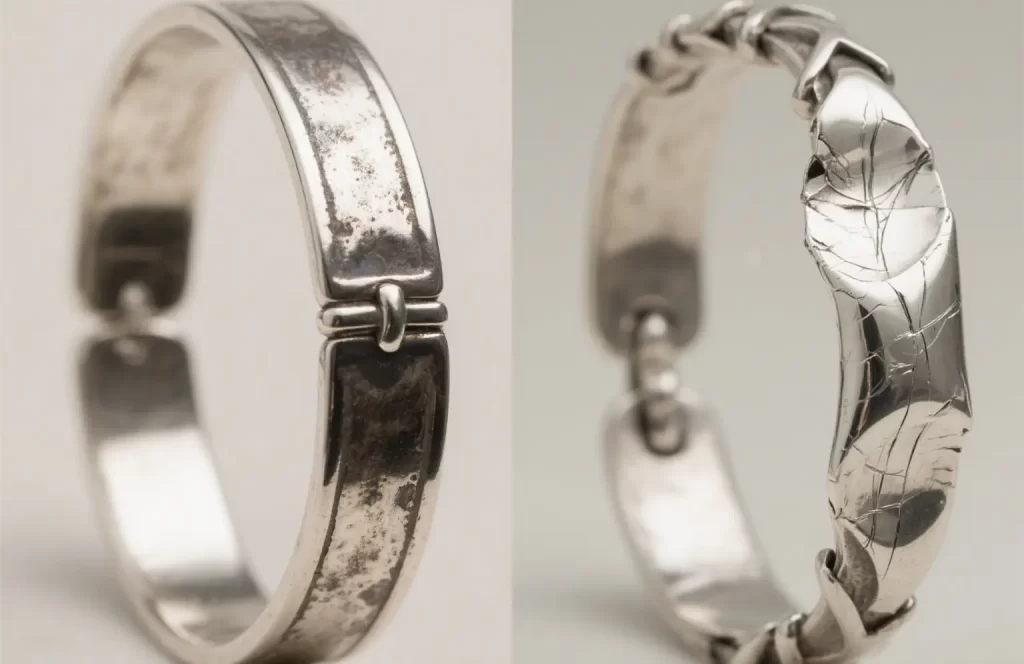
Tarnish is a natural occurrence that develops from silver quickly corroding with sulfur in the air. It appears as a cloudy white, gray or black layer, but that doesn’t mean your silver is destroyed. Tarnish can easily be removed with silver polish or a polishing cloth.
This isn’t the same as physical damage, such as deep scratches, dents or bent chains, that would require a jeweler’s touch. It’s important to understand the difference. Tarnish only alters the appearance but not the integrity, while damage can compromise the strength of the piece.
If a piece is heavily scratched, or if stones have become loose, it’s certainly best to seek professional assistance. Indicators such as deep cracks or a broken clasp indicate it’s time for repair, not just a quick polish.
6. How Alloys Affect Durability
Sterling silver, composed of 92.5% silver and 7.5% other metals, typically copper, is renowned for its durability and beauty. This makes it an excellent choice for quality sterling silver pieces that require a lot of structural integrity. However, copper’s reaction with air and moisture accelerates tarnishing, which is why proper maintenance, including regular cleaning, is essential to keep your sterling silver lasts for many years.
Some jewelers opt for different alloys, such as zinc or platinum, to slow down the tarnishing process or alter the color. For example, rhodium-plated or gold-plated sterling silver features a protective surface layer that helps maintain its shine. While the rhodium layer may wear off, understanding the importance of sterling silver care can prolong the life of your jewelry.
Ultimately, the type of alloy used significantly influences the appearance, texture, and aging of the piece. By choosing sterling silver jewellery pieces with care and following proper storage methods, you can ensure your beautiful jewelry remains a treasured part of your collection for years to come.
7. Frequency of Use Impact
If you wear sterling silver every day, it’s going to encounter sweat, air and other factors which contribute to faster tarnishing. Things that are not worn on a daily basis, such as family brooches or keepsake necklaces, tend to retain their shine longer.
Even so, all silver will benefit from a quick rinse or wipe down after each use. Regularly wiping your silver with a soft, dry cloth will get rid of skin oils and other small debris. Whether your pieces are worn every day or once a year, storing your cleaned, polished pieces in lined boxes or pouches will keep them lasting longer!
8. Craftsmanship Quality Matters Greatly
This brings us to the craftsmanship quality, which plays a huge role in how long a sterling silver piece will last. Jewelers craft high quality jewelry with seamless joins, sturdy prong settings, a well-balanced design and other subtle details.
These characteristics assist it in resisting the rigors of everyday use and retain their form through the years. HonHo Jewelry from China has 30 years of professional experience. They employ cutting-edge techniques and meticulous craftsmanship to produce long-wearing sterling silver, gold vermeil, and gold-filled creations.
Extended Life Span Custom waterproof and non-tarnish options are available, which can lengthen the lifespan. High level craftsmanship allows for repair and cleaning to be done much more seamlessly as well, allowing the piece to remain in use for generations.
9. Is Patina Good or Bad?
Patina is a natural process that happens when sterling silver reacts to sulfur in the air, creating a dark, soft finish that develops over time. Others appreciate the appearance, as it adds a certain character and depth to pieces of jewelry, particularly on engraved or textured surfaces.
For some, a patina means it’s time to get the polish out. There’s no correct solution—patina can be allowed to remain as a design aesthetic or polished off for a radiant appearance. If it patinas too fast or turns green, that could mean more severe tarnish or corrosion.
If that’s the point you’ve reached, investing in a professional cleaning is a smart move.
Sterling Silver vs. Silver Plated
The world of silver jewelry brings two main choices: quality sterling silver and silver-plated. While they may appear similar at first glance, their composition and longevity differ significantly. Understanding these key differences, such as how sterling silver lasts longer with proper storage and maintenance, is crucial for selecting pieces that meet both aesthetic and financial considerations over several years.
What Is Silver Plated Jewelry?
What is Silver Plated Jewelry? It achieves its glossy surface by being covered in a very thin layer of silver through the process of electroplating. This coat of silver is typically only a few microns thick.
Because the base is not made of silver, the outer layer can easily wear away with regular use. Because the layer is so thin, over time it can fade or chip, so the care you provide is critical.
Lifespan of Silver Plated Items
In terms of longevity, most silver-plated pieces will hold up for two to four years with regular wear. Items with thicker plating or softer treatment will wear longer, but constant abrasion, perspiration and other contact with chemicals does wear down the appearance over time.
Store them dry and wipe them down with a soft cloth to keep them jewelry sparkling all the time. Keep in mind that the silver layer will wear off over time.
Durability: Sterling Wins Longterm
Sterling silver is made up of 92.5% pure silver, the remaining percentage being copper that adds durability. This combination makes sterling silver durable enough to withstand changing trends and sometimes even a lifetime or two.
Minor scratches or tarnish can usually be polished out. Rhodium-plated sterling tends to last a bit longer, but will require re-coating.
Spotting Plated vs. Solid Silver
Solid sterling silver typically will have symbols such as “925” engraved or stamped into the piece of metal. Plated items often do not have these stamps or indicate “EP” for electroplate.
Weight is another thing that varies, often making solid silver pieces feel heftier.
Why Sterling Is Worth It
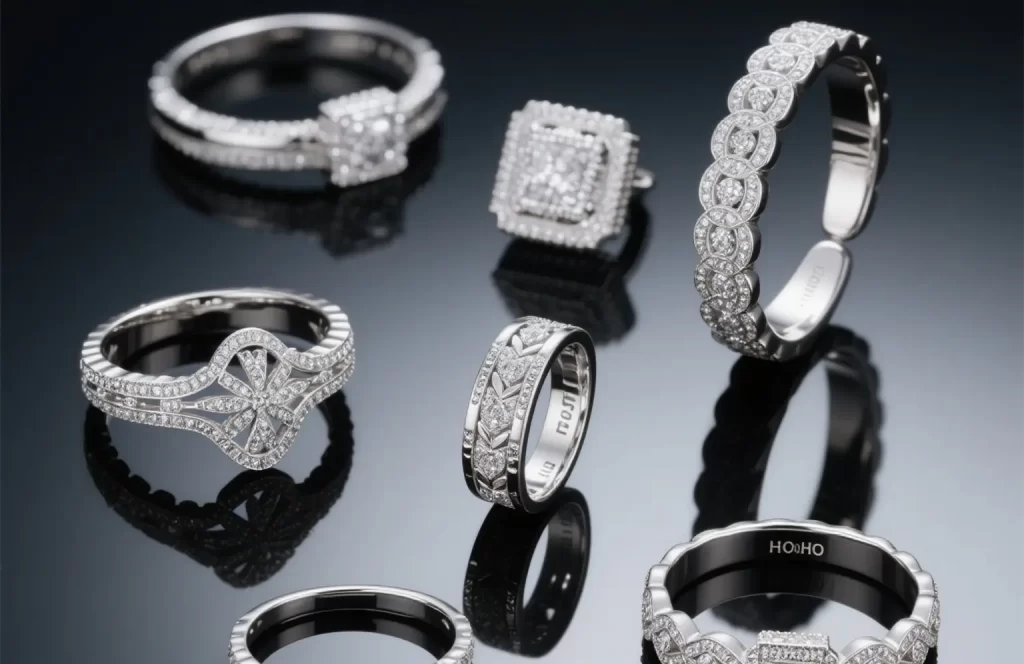
Sterling silver costs more up front but lasts much longer, keeps its shine with care, and can hold deep meaning as a gift or heirloom.
HonHo Jewelry, with over 15 years crafting 925 silver and non-tarnish designs, offers both plated and solid options for any taste.
Extend Your Silver’s Life
Traditional sterling silver is well-known for its beauty and long-lasting charm, yet this brilliance can diminish over time without proper care. Day to day life either in bustling urban centers or peaceful residential areas takes a toll on silver. Air, sweat, and basic storage decisions can all affect its appearance over time.
With a few simple techniques, you can extend the life of sterling silver for many more years. With the proper care, most of them can last for decades—sometimes 30 years or more! For those who value their jewelry, knowing how to clean, store, and protect silver means more years of shine and less worry about tarnish or dullness. The following tips outline the most essential practices to ensure your sterling silver stays looking its best.
Clean Your Silver Correctly
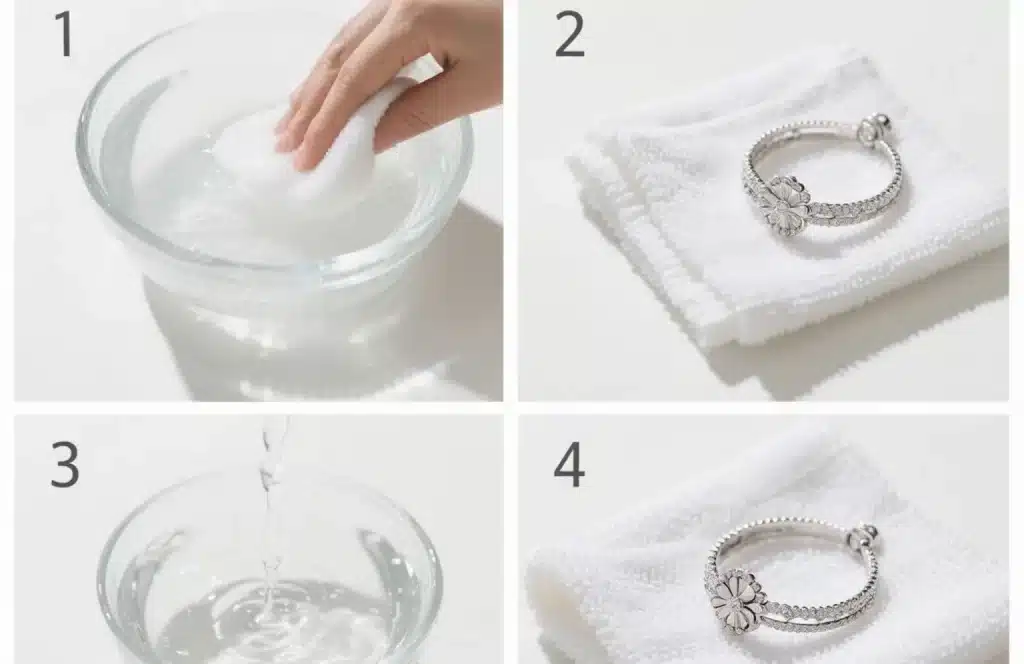
Prevention through regular cleaning is the key to sterling silver care. Dust, sweat, and skin oils build up quickly. This is particularly the case in warm, humid climates such as the East Coast of the United States and rainy countries in Europe.
To clean, first soak the jewelry in warm water with a drop of mild dish soap. Use a soft cloth—think old cotton tee shirt or a microfiber towel—so you don’t scratch. Don’t use paper towels or tissues, they will scratch the surface. Rinse once more and then dry thoroughly with a clean, soft cloth.
For everyday dirt, a gentle rubdown post-wear will do the trick. Avoid toothpaste or baking soda, which can scratch silver. Even basic things, such as properly drying the jewelry after cleaning it, will protect the silver from tarnishing due to exposure to moisture. Wearing your silver every day, except in the shower or lap pool, helps prevent tarnish, too. This oily layer acts as a barrier to oxidation, helping prevent dulling effects over time.
Choose Safe Cleaning Methods
Choose safe cleaning methods. Not all cleaning solutions are created equal. Innovative products now available eliminate the need for these harsh chemicals. These materials can remove the top layer of silver or even corrode the metal beneath.
Safe alternatives include easy home solutions like combining a little lemon juice with water or using white vinegar and baking soda. Simply soak the piece for a few minutes, rinse off and dry. Commercial wipes and liquid solutions, available through jewelers and e-retailers, are very effective when used properly.
These products are specifically manufactured for silver and are safe for frequent use on silver surfaces. Do not use bleach, ammonia or abrasive powder. These can pit or corrode the metal, causing it to break or lose its luster over time. If you have silver that is rhodium plated, use mild cleansing solutions. Harsh chemical agents will only speed up the death of the rhodium plating. Proper cleaning can help your silver maintain its luster without exposing it to harmful long-term effects.
Store Your Silver Smartly
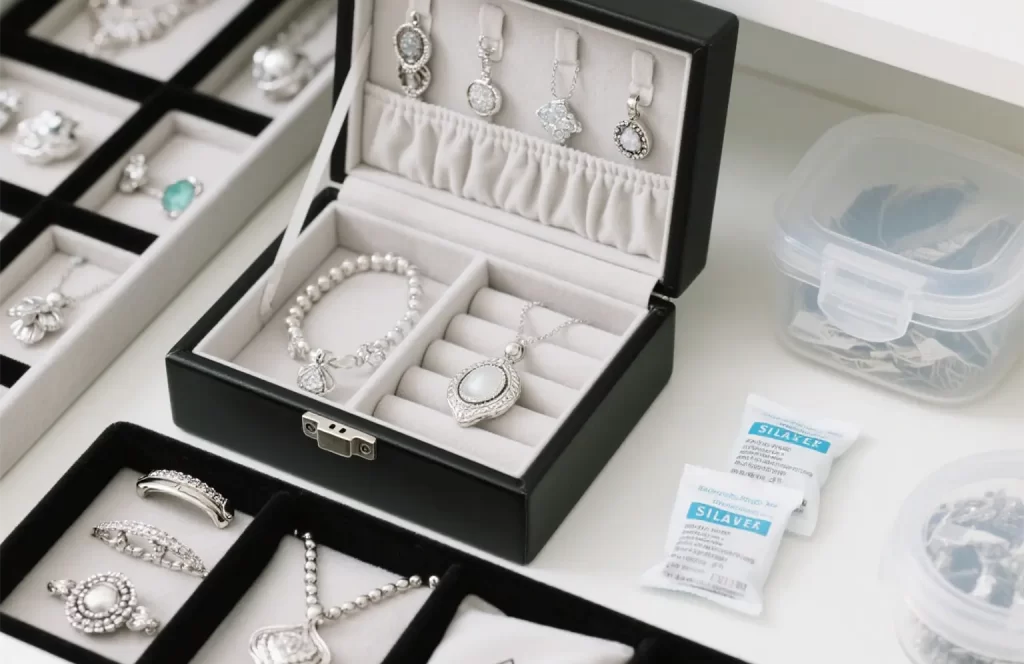
How you store silver and where you store it is incredibly important. It’s well-known that silver tarnishes much quicker in humid, polluted, or hot locations.
Try anti-tarnish pouches, which have a special lining that absorbs air and moisture. Airtight containers or zip-bags likewise prevent tarnish by halting oxygenation. Keep each item individually, away from other pieces of jewelry to avoid scratches or marks.
A soft-lined jewelry box is ideal, as is a drawer lined with felt or cotton. Avoid leaving silver in bathrooms or kitchens, where steam and cleaning products in the air hasten tarnishing. If you’re in a humid city, keep silver as far away from windows and vents as possible. Things like car exhaust and heating systems can darken it almost instantly.
By keeping your silver somewhere cool and dry, you can prevent the top causes of tarnishing and wear.
Avoid Harsh Chemical Exposure
Every day products like hairspray and perfume damage silver. Take off your jewelry before coming into contact with cleaning sprays, bleach, or even hand sanitizer. Pools and hot tubs are filled with chlorine, which can turn silver black in a matter of hours.
Cosmetics, lotions, and perfumes are all composed of chemicals that bind to metal and accumulate over repeated uses. Wear jewelry last, after using these products, to reduce exposure. Even everyday activities like preparing foods with pungent spices or highly acidic foods can tarnish silver if it’s being worn on the hands.
Avoid harsh chemical exposure. Be on the lookout for these hazards! Get in the habit of taking your jewelry off when doing housework, swimming, or going to bed to prolong its life.
Know When Polishing Helps
Cleaning and polishing are different things. Light polishing—with a special silver cloth, only—will be your best friend for maintaining shine in between deeper cleans or professional polishes. These cloths have a pre-mild cleaner and remove tarnish without scratching.
Deep cleanings, which will involve a liquid or paste cleaner, should be done less frequently, only when there is significant tarnish. Heavy-handed polishing can wear through the surface of the silver, particularly with silver plate. Polish with light, brief strokes and cease as soon as the luster returns.
For everyday wear, a gentle polish with a cloth once a month is usually enough to keep pieces shiny without causing erosion.
Consider Professional Cleaning Options
When regular home cleaning just isn’t cutting it, it’s time to consult a jeweler. When your silver tarnishes and turns black or if you feel any detail is lost, cleaning professionals have access to tools and solutions specifically designed for precious metals.
They’re able to deep clean, buff away stains and repair small dings or scratches. In addition to cleaning, these jewelers inspect your pieces for loose stones and weak clasps, preventing future loss or breakage.
For heirloom or valuable pieces, an annual professional inspection and cleaning ensures they stay safe and shiny for years to come. Rhodium-plated pieces only last a few years and require periodic re-plating, something only an experienced jeweler should attempt.
Relying on professionals to tackle the heavy lifting ensures you continue enjoying your silver for many years.
Recognizing Signs of Wear
Few metals can match the vibrancy of sterling silver with its beauty and versatility. Despite the most gentle of uses, wear and tear will eventually be seen after normal use. Knowing how to recognize signs of wear will ensure that your jewelry stays in optimal condition!
Conducting routine inspections will help identify issues sooner and address repairs before they develop into more serious concerns. Being mindful of these aspects will allow you to have the most fun with your works and keep them looking beautiful!
Spotting Heavy Tarnish Buildup
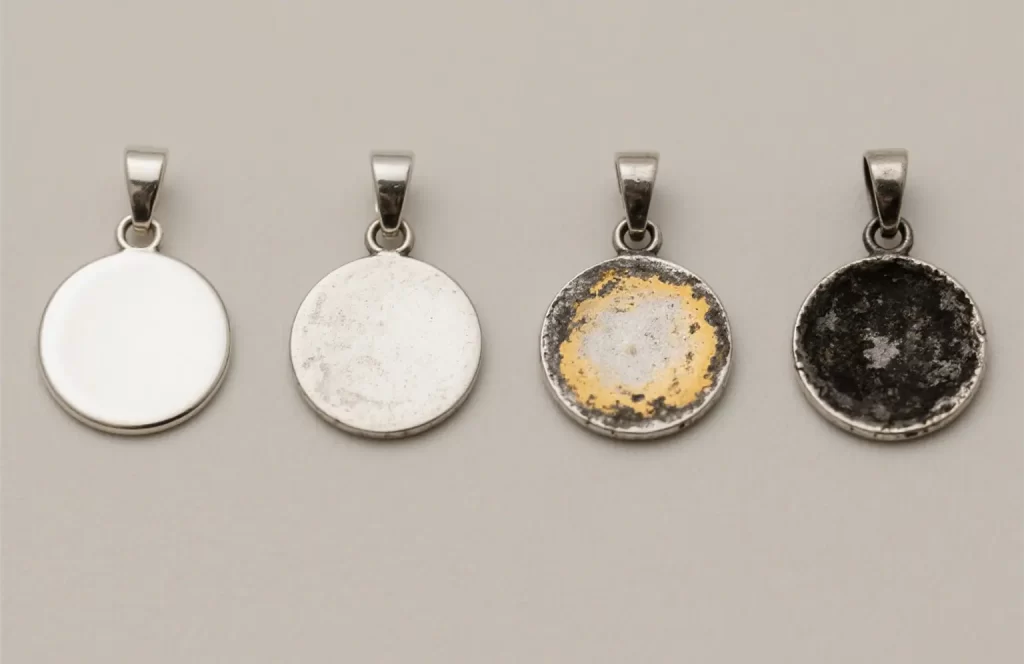
Tarnish is often one of the first things that draws you to sterling silver. It appears as a heavy, flat, gray or yellowish patina, often with darkened spots. This is due to oxidation—when the metal is exposed to air and moisture.
In crowded urban centers or tropical climates, tarnish may form in a few months. This is particularly the case if you are a daily wearer of your jewelry! Rhodium-plated pieces typically last one to three years without tarnishing.
When left dirty, they can tarnish at an alarming rate. Removing tarnish buildup as soon as it occurs prevents more severe stains that are far more difficult to remove over time.
Identifying Deep Scratches or Dents
Initially, it may be difficult to identify scratches and dents. The moment you pass your finger along the piece, they’re all too obvious. Normal wear and tear, such as typing on the job or exercising, may lead to these imprints.
These deep scratches compromise the integrity of the metal, increasing the chances that it will break or deform. If you notice a large indent or deep groove, it’s prudent to have a gemologist inspect the item.
Repair prevents the issue before it becomes a real danger so your jewelry can remain sturdy.
Noticing Thinning Metal Areas
Thinning usually occurs on bangles or rings—areas that are in constant contact with other surfaces. You may notice these areas appearing shinier or sounding more hollow. If the metal thins out too much, it may break.
Treat these pieces with care, and keep them in a protected, dry environment to prevent further deterioration. When you collaborate with HonHo Jewelry, you make an excellent selection.
Their 925 silver creations are made with waterproof, non-tarnish designs so your beautiful jewelry holds up longer and continues to shine.
Our Take: Sterling’s Enduring Charm
Sterling silver remains a strong fixture in contemporary and vintage jewelry wardrobes. Its blushing glow and understated elegance are truly irresistible. This characteristic imbues each work with a malleable aesthetic that can fit into virtually any mood or occasion.
Most folks have a deep emotional connection to their sterling silver. These works either celebrate important events or become everyday fixtures that remain for decades. With 92.5% fine silver and 7.5% copper for strength, sterling silver is surprisingly strong. This sturdiness means that bracelets, rings, and necklaces have been handed down through generations.
Why We Love Sterling Silver

Sterling silver continues to be a go-to choice for consumers seeking jewelry that offers elegance at an accessible price point. It’s less expensive than gold or platinum, which makes it simple to begin a collection—or give someone a noteworthy piece.
It pairs perfectly with almost every aesthetic, from the casual vibes of streetwear to the elegance of formal attire, functioning beautifully for both everyday use and major evening occasions. Those with sensitive skin usually look for sterling silver as it is safe and harmless.
At HonHo Jewelry, we produce 925 silver jewelry which is waterproof and non-tarnish, so it can hold its luster for a long time.
It Ages Gracefully With You
Just like sterling silver, this community ages gracefully with you. This muted black patina is soft to the touch, revealing the marks of time and use, making even the most basic bands or hoops into heirlooms.
Heirloom pieces, like our grandmother’s worn dining table, live in families, each patina accumulated over a life telling its own tale. Treated well, a simple silver necklace or bracelet can last for generations.
A Sustainable, Lasting Choice
Sterling silver proves to be a great option for the planet. Unlike fast fashion costume jewelry, it outlives generations. Beautiful works of art created by master artisans last through generations of everyday life.
Making the switch to sterling silver equals less waste and more beauty and value in each piece.
Conclusion
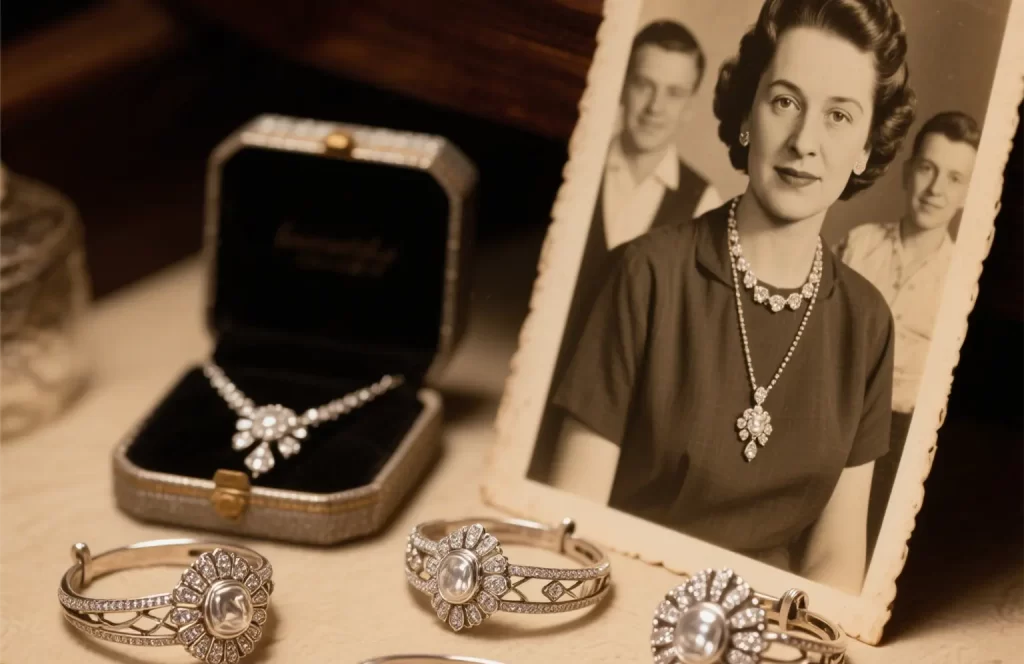
With the right care, sterling silver stays with you for many years—even decades! People in the United States still wear family rings, still pass down old silverware, and yet still experience tarnish with a quick polish. If you notice some scratches or dark spots, it just needs a quick polish—not a permanent retirement.
Silver-plated junk chips quickly, but genuine sterling can endure for generations. Keep it dry, wipe it down, store it properly—not exactly rocket science. If you want your sterling silver jewelry to maintain its beautiful luster, follow these simple care tips. Have any questions, or looking to trade advice on keeping your silver in top form? Leave a comment below or tell us your care stories. As with most everything, silver will only last as long as you take care of it.
Frequently Asked Questions
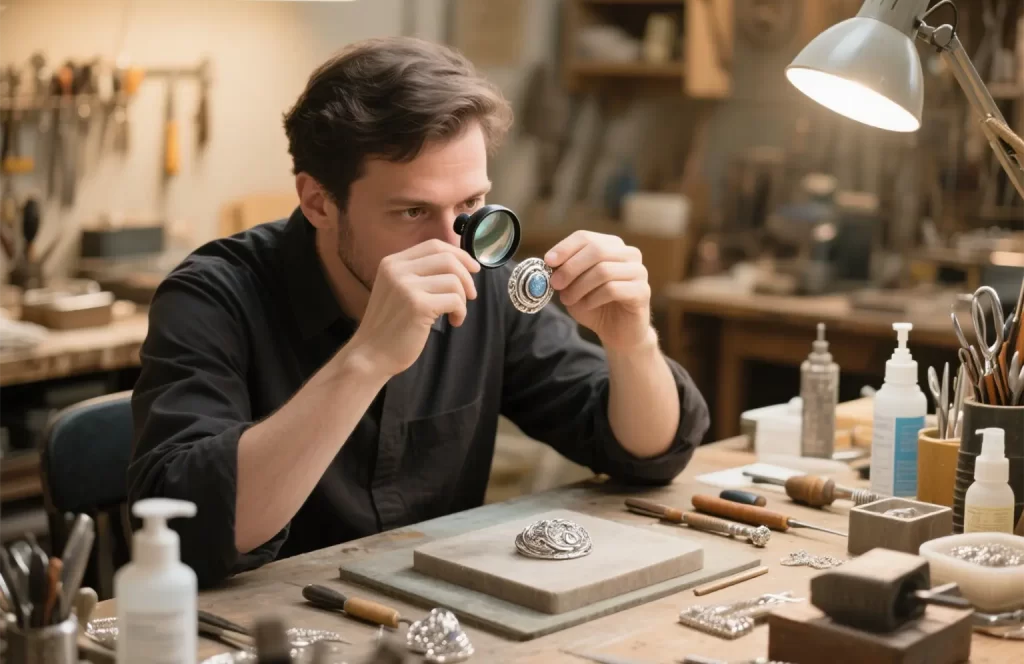
How long does sterling silver jewelry usually last?
As long as you practice proper sterling silver care, your sterling silver jewelry can last a lifetime or even longer. These precious sterling silver jewellery pieces are timeless, often passed down through generations. While tarnish and wear are normal, regular cleaning will ensure your jewelry continues to shine beautifully.
Does sterling silver tarnish over time?
This is to be expected; however, proper storage and regular cleaning of your sterling silver jewellery pieces can help reduce tarnishing significantly.
Can you shower with sterling silver?
To maintain the beauty of your sterling silver jewelry pieces, it’s advisable to avoid showering with them. Soaps and water can lead to tarnish, dulling the finish on your precious sterling silver jewellery and compromising its good longevity period.
Is sterling silver better than silver-plated?
Absolutely, real sterling silver is just silver alloy mixed with some copper to enhance its strength. Unlike sterling silver jewellery pieces, silver-plated items have only a thin layer of silver on top. Quality sterling silver lasts many years longer and holds greater worth.
How can I make my sterling silver last longer?
To ensure your sterling silver lasts, store it in a dry area, ideally in an airtight jewelry box or ziplock bag. Regular cleaning and polishing with a white cotton cloth will help maintain its shine. Avoid harsh chemicals, lotions, and perfumes to prevent tarnish on your precious sterling silver jewellery.
What are signs my sterling silver is wearing out?
Deep scratches, dents, or other surface damage on your sterling silver items that cannot be polished out may indicate a need for repair. Regular cleaning of your sterling silver jewellery pieces is essential to maintain their shine.
Does sterling silver lose value over time?
Sterling silver retains its value more than any other type of plated silver. Though the price of silver fluctuates, quality sterling silver will always have more value than costume or silver-plated jewelry.
Share:
More Posts
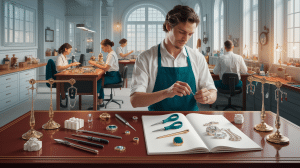
10 Questions to Ask When Choosing a Jewelry Manufacturer
Key Takeaways Jewelry manufacturer vetting is the quality, ethics and on-time delivery checking of suppliers. It includes material traceability, fair labor, audit history, capacity and
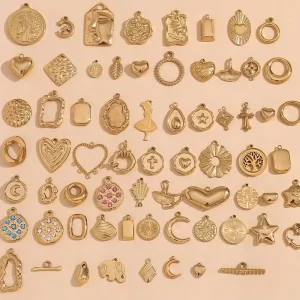
Jewelry Findings Guide: Essentials for DIY & Hypoallergenic Design
Key Takeaways Jewelry findings guide provides concise information on the smaller components used in jewelry manufacture and repair. These pieces are clasps, hooks, jump rings,
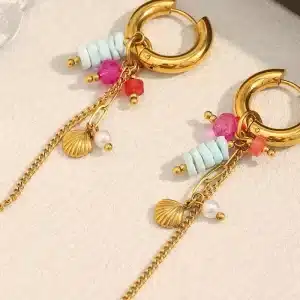
Waterproof Jewelry Materials: A Guide for Your Next Vacation
Key Takeaways Waterproof jewelry materials include stainless steel, titanium, platinum, and silicone. These metals and non-metal alternatives don’t rust or dull when worn in water.
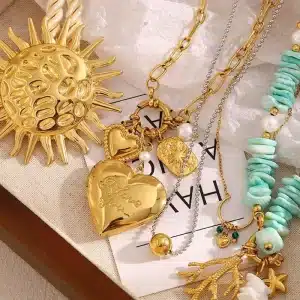
Charm Chain Styling: A Guide to Layering and Materials
Key Takeaways Charm chain styling is basically adding little charms to a plain chain in order to create a new look. This method of adorn
Send Us A Message
Related Posts

How Long Does Sterling Silver Last? Factors That Affect Its Durability
Key Takeaways How long does sterling silver last is a common question for jewelry lovers. With proper care and maintenance, sterling silver can last for
